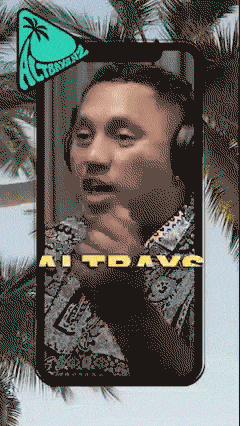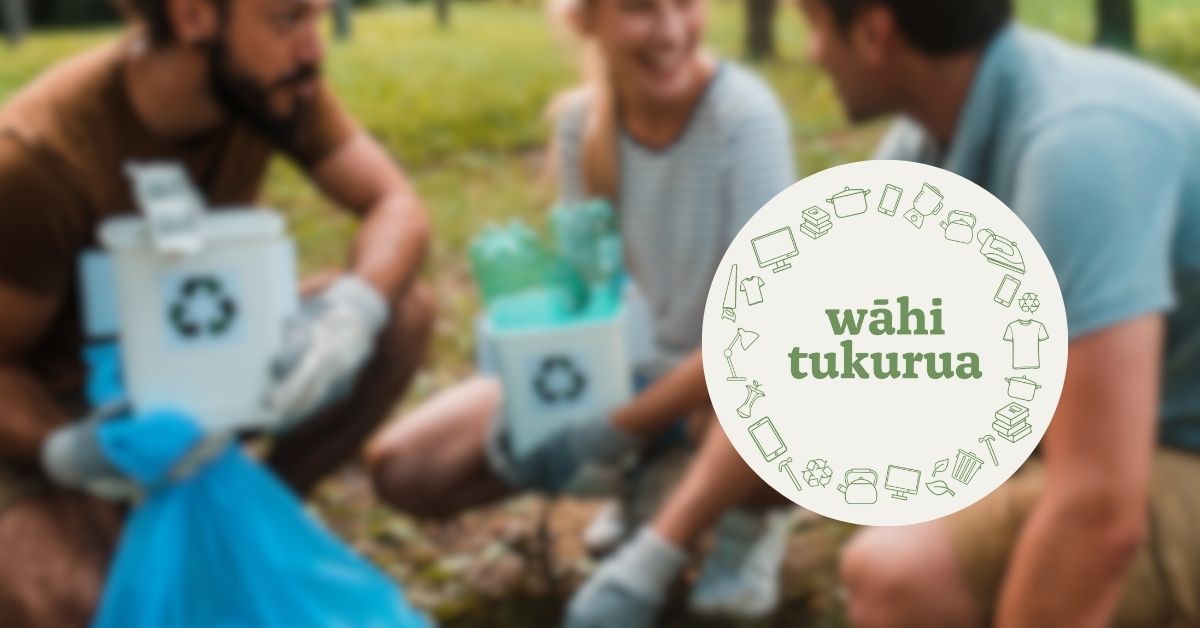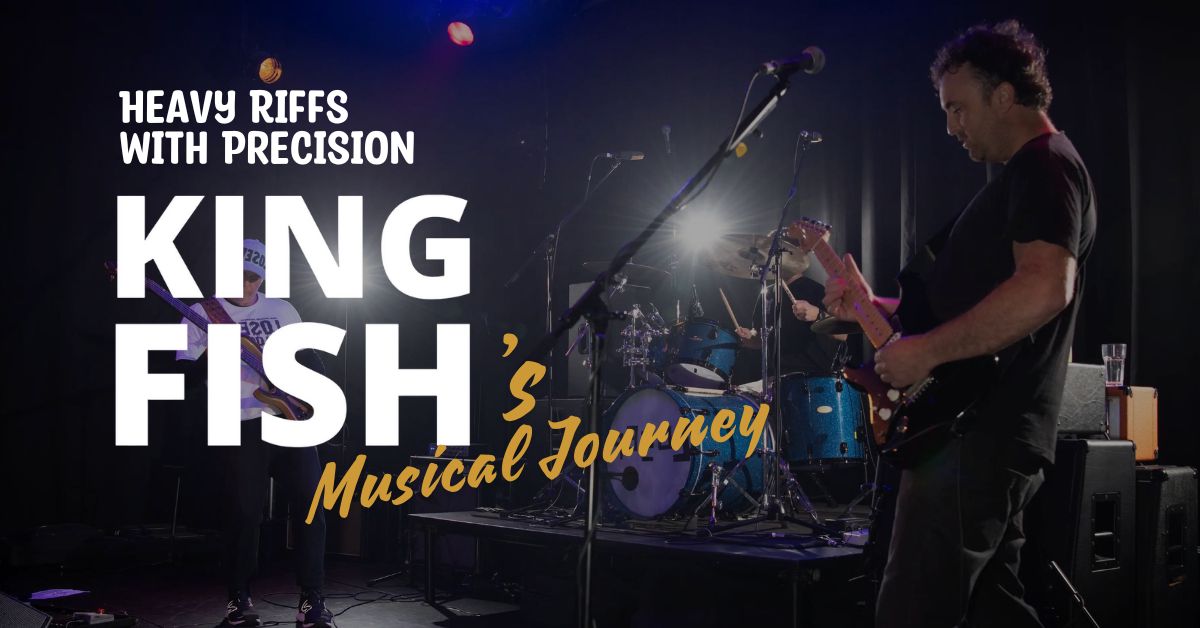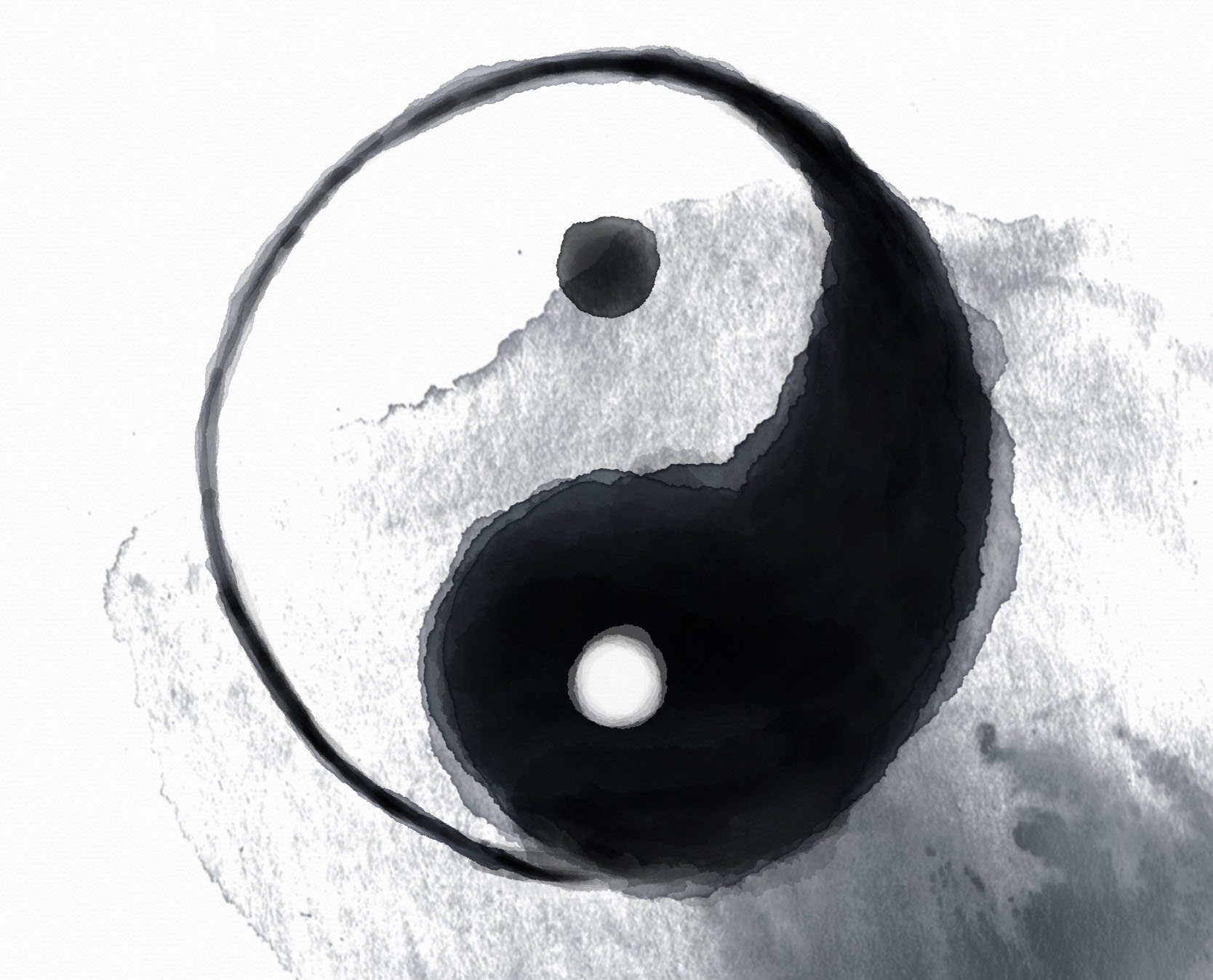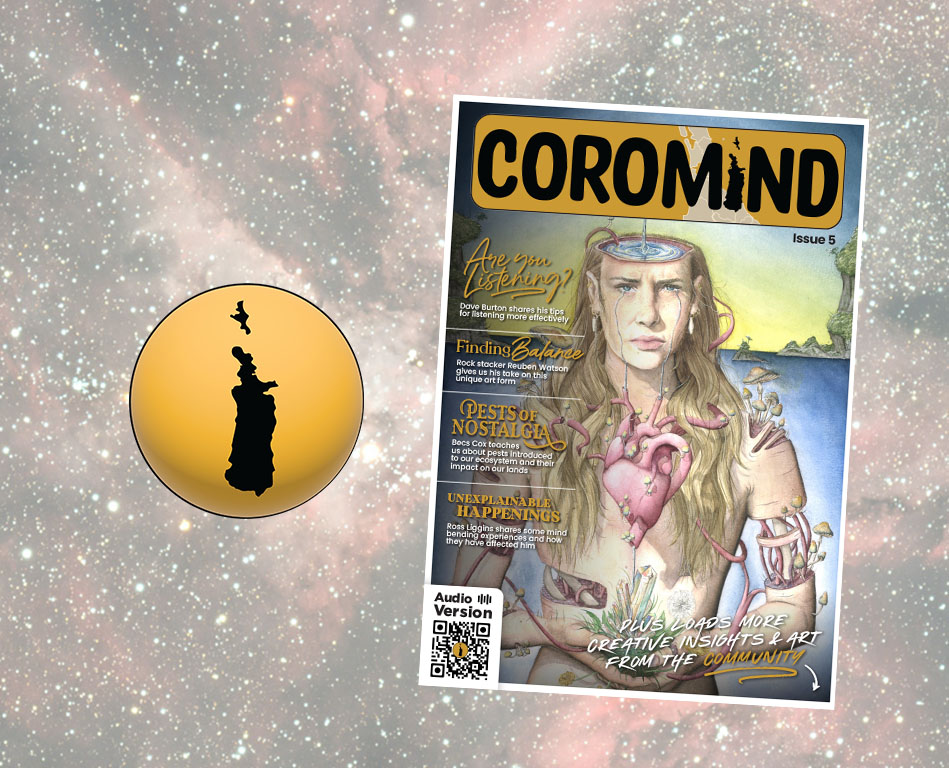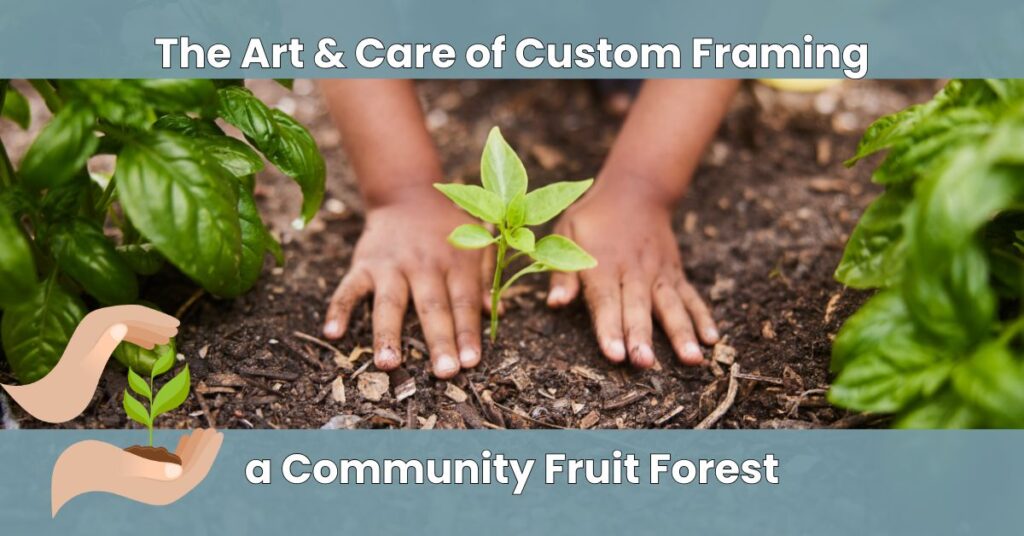
Let’s create an ecological future for our children
Living in Whitianga for over 50 years, I have witnessed the rapid decline of our native trees/shrubs/grasses/food sources and habitat for our native birds, insects, bees and butterflies. Hilton Park to use one example once was bustling with dragonflies, frogs, wax eyes, tūī and kererū. Muehlenbeckia and other native plant species grew along a beautiful stream (swale), which ran through the middle of the park with edible watercress growing in the drain which was sprayed regularly with glyphosate (Roundup); the stream has since been buried so birds no longer have access to water during summer months.
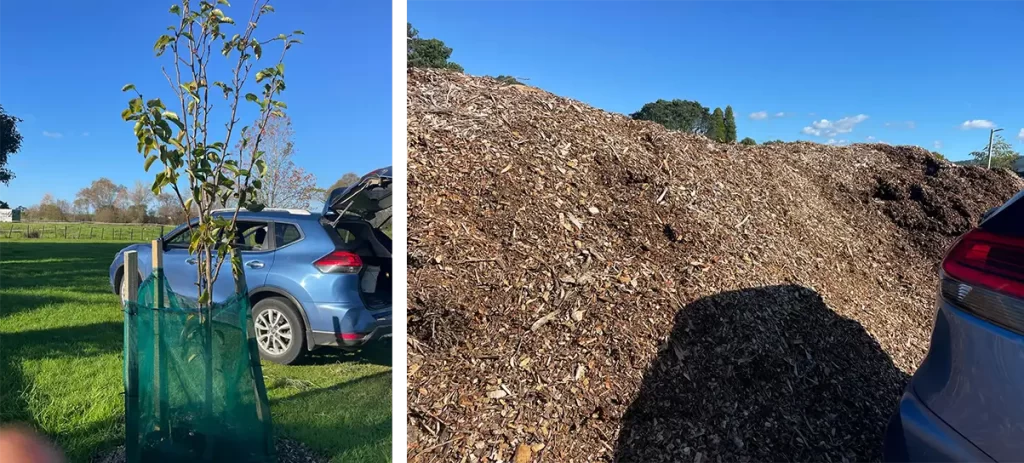
Our street, Moewai Park Road, is full of young families from newborn to youth (our future leaders); we are also close to the Moewai Sport Complex and access to fruit trees after a game would give youth FREE organic (spray free) fruit. To create a fruit forest, the first thing you need is patience and knowledge that you are starting a long-term project. The second is a piece of land (the bigger the better), so check out the green spaces near you.
To create a sustainable system, you need to imitate patterns you see in nature. Soil is important; it is the first thing you need to pay attention to, given the rapid rate of development seen here in our community with no concern for the wide variety of insects such as our native wētā, bees, native butterflies (especially our field butterflies), birds, trillions of microbial insects, skinks and geckos.
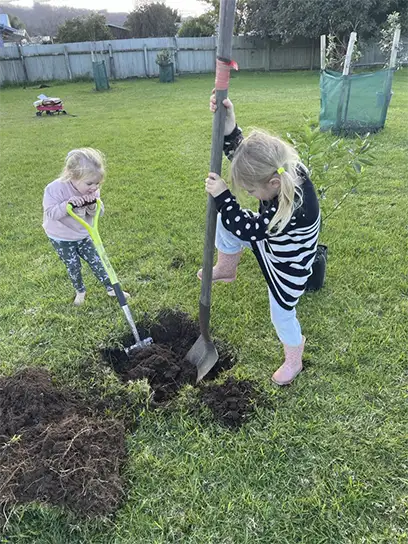
Before Covid, Thames Coromandel District Council cut down a well-established chestnut tree and then removed our playground here in our park.
Also, the largest and oldest stand of macrocarpa and gum trees were cut down by developers while the grey heron were nesting and feeding their young – displacing the heron chicks and stressing the parents’ nest and security, so action needed to be taken – not only for our future native insects but for our children and their children – this sparked the creation of a fruit forest for future generations.
Given the ‘Cost of Living’ narrative we were constantly hearing, our community decided to provide fresh fruit and berries for lower socio-economic whānau (families) and to organisations such as Bellyfull (mums get ready-made meals when they bring their babies home) and the combined churches’ Monday meals needing additional kai (food).
Trees are the heart of permaculture – fruiting and non-fruiting trees help provide resilience in the ecosystem. Swales can be important for rain catchment and sequestration of rainwater for dry months. We need help with anyone who can build a water catchment system similar to barrels stacked on top of each other with a small sheet of iron feeding the rain into the barrels with a tap we can use to hose our trees during summer months.
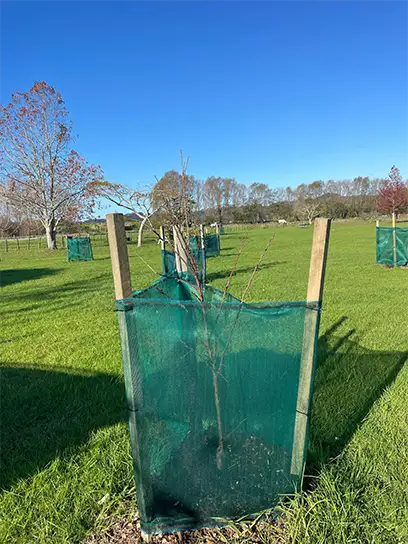
Fruit forests offer a multitude of benefits, such as:
- Increased biodiversity – habitats for plants and animals
- A degree of offset for climate change – trees and plants absorb carbon dioxide
- Strengthened communities – by providing healthy food and improving air quality
- Improved soil health – by stabilising soil, reducing erosion, improving soil structure and fertility
- A natural haven for pollinators – flowers send out an electrical signal to attract bees; a fruit forest provides food and shelter for pollinators essential for plant reproduction
- Fewer shopping expenses – families with access to free fresh produce can save a significant amount of money each month.
There has been too much emphasis on our financial future; however, we need to create an ecological future for our children, and their children – just like other species we are supposed to live here in unity. The most inspiring documentaries to learn from are on YouTube, such as: Back to Eden Gardening Documentary, Permaculture Ponds, Down to Earth Org India, Sustainable Permaculture Ananda, Permaculture Farming India.
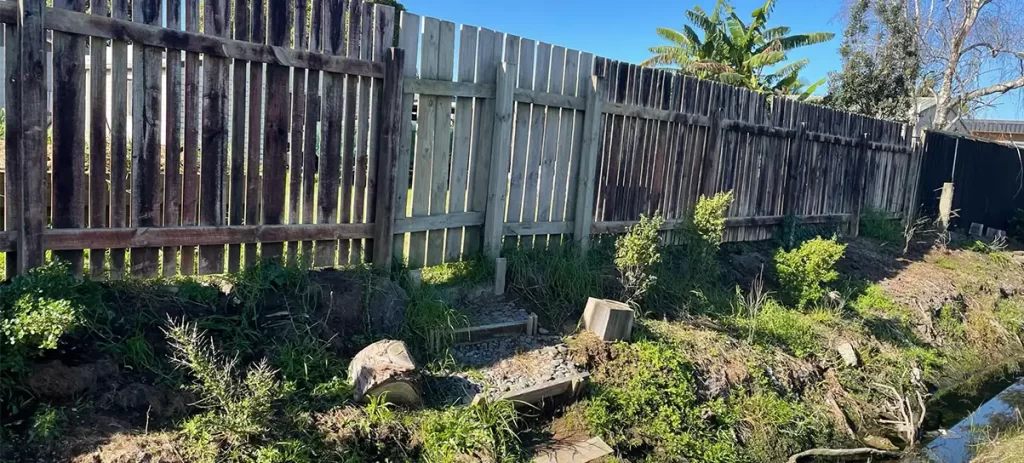
Reach out to TCDC and ask for some fruit trees and native shrubs. Then get together to plant them out and watch them grow each year until you can share the produce with your local pre-school, schools, care providers and youth as they will be able to share it with their children in the future and the insects, bees, birds will be grateful for a habitat and food source. Remember Mother Earth, our beautiful Papatūānuku, gives to us for free.
Let us cloak her with trees so she can allow us to breathe again.
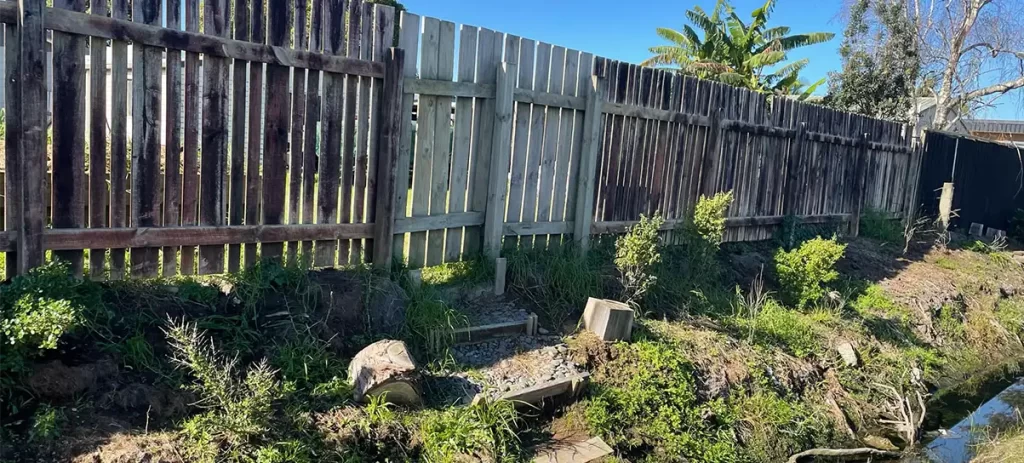
Words by Nira Giri
Coromind: Coromandel’s Collaborative Magazine

Help us take Coromind Magazine to new heights by becoming a member. Click here
Change the Weather for Your Business: Advertise with Us.
Advertise your business in the whole Hauraki Coromandel in the coolest Coromandel Art Magazine, from Waihi Beach/Paeroa /Thames up to the Great Barrier Island.
Advertise Smarter, Not Harder: Get in Touch


